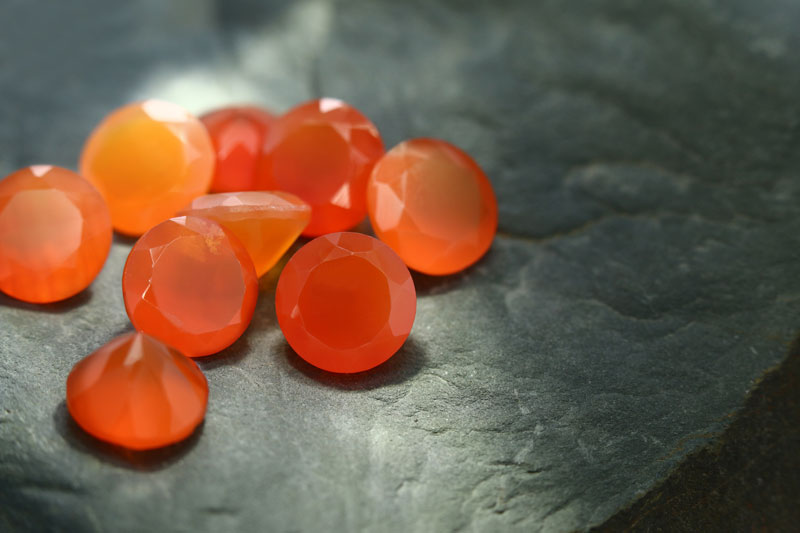
Naming of carnelian
The term “carnelian“ is likely to be based on the name of the "Cornelian cherry", which is similar in colour. Another interpretation sees the origin of the name in the Latin word for "meat" - "carne" - which also has a colour similarity.
Chemical composition of carnelian
Carnelian belongs to the group of Chalcedon’s, which in turn are members of the large quartz mineral family. In the cryptocrystalline chalcedony, the individual crystals, in contrast to the microcrystalline quartz such as amethyst or citrine are not visible to the naked eye.
The carnelian, which may be translucent to opaque, is coloured by the element iron.
Origin of carnelian
The quartz variety of carnelian can be mined in Madagascar, Brazil, India or Uruguay.
History of carnelian
Carnelian has always been a popular gemstone that was favoured by Mesopotamian kings. Napoleon also adorned himself with this gemstone. Even in the Bible, carnelian is mentioned as one of the gems of Aaron's breastplate (Exodus 28: 15-30) and as one of the 12 gems set in the foundation of the city of Jerusalem (Revelation 21:19).


Characteristics of carnelian
The unique colour of carnelian contributes to its popularity - the red or brown red shines in a translucent to opaque crystal body. The red-brown to brown carnelians are sometimes referred to as "sardines".
Care of carnelian
Carnelians can sometimes fade or return to their original colour when exposed to strong light. In addition, to preserve the quality of your carnelian, you should never subject this gemstone to ultrasonic cleaning. The cleaning with steam, however, is harmless.






















